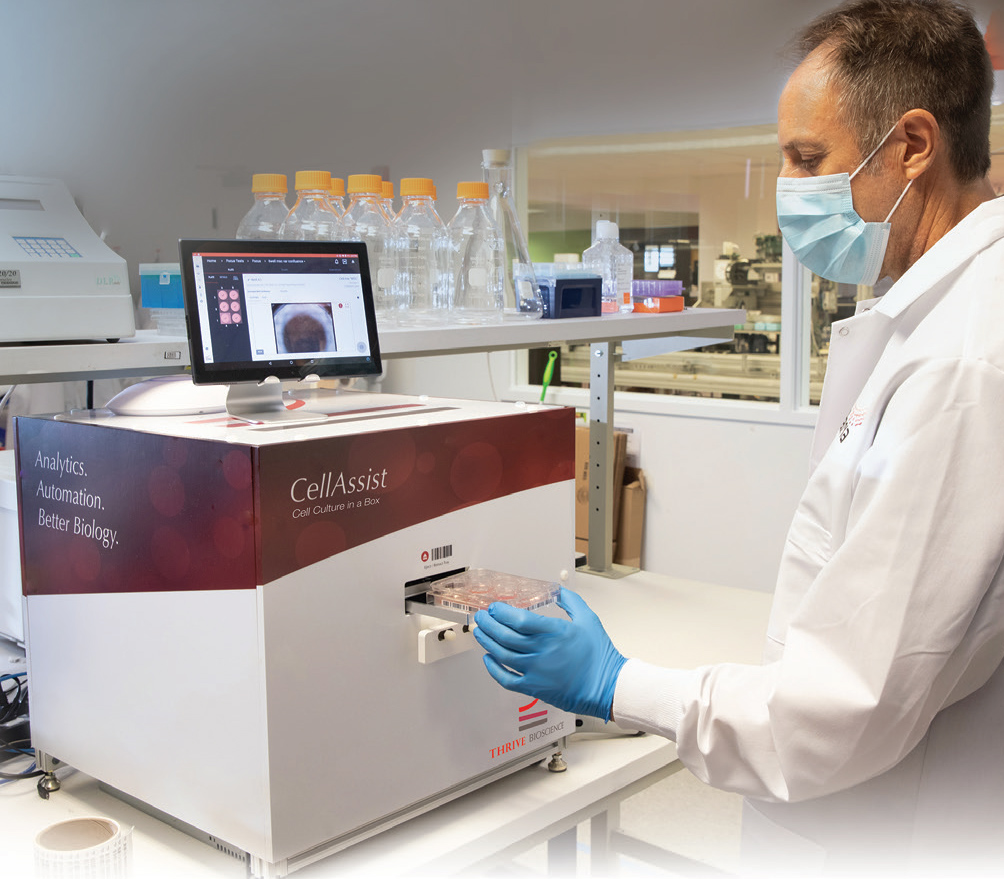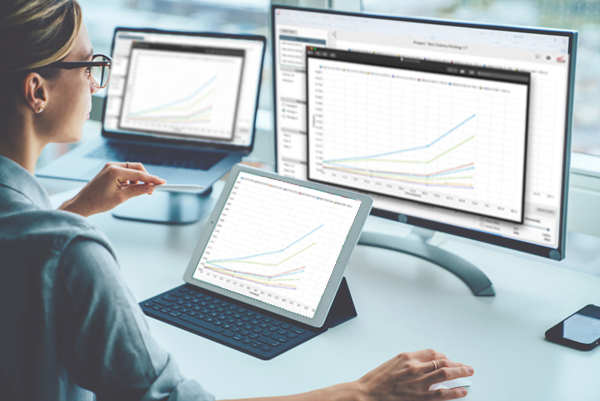
The CellAssist
Thrive Bioscience’s new benchtop instrument, the CellAssist, automatically builds a database of images, metrics, and methods, and materials to ensure centralized capture, and retention of data. The unique CellAssist sets new standards for reproducible cell, tissue, and suspension culture in numerous applications.


Thrive Bioscience’s CellAssist Software is a computer workstation at the heart of the CellAssist’s visualization and analysis capabilities. It can be placed in the laboratory or office to automatically download all of the images from the CellAssist instrument.
The CellAssist software analyzes the images, and presents a comprehensive, and coherent view into all of the images, and metrics from the entire history of all of the laboratory’s projects.
In addition, the entire plate setup information, normally entered into the CellAssist tablet, can also be entered into CellAssist Software, and automatically transmitted to the CellAssist instrument.
The CellAssist provides image capture, reports, and a database on cultured cells with these added features, and product specifications:
Instrumentation
Software
Instrumentation
Software
Specifications are subject to change without notice. The CellAssist is for in vitro, and laboratory use only.
“The CellAssist Experience” video (3:38 minutes) provides an overview of the CellAssist, which combines an advanced imaging system coupled with intuitive software to provide high-resolution images with excellent accuracy.
The unique capabilities outlined in the video enable biologists to gain a deeper insight into cell dynamics, and greatly improve the reproducibility of cell, tissue, and suspension culture experiments. Learn more about CellAssist, and its capabilities with this video.
Thrive Bioscience recently conducted a comprehensive video interview with Steven Sheridan, PhD, Senior Research Investigator, Center for Genomic Medicine, Massachusetts General Hospital (8:48 minutes).
During this “Researcher’s Insight” interview, Steven Sheridan provided an in depth overview of how the CellAssist addresses his laboratory’s cell culture pain points. Specifically, how to empower biologists with superior image resolution, excellent registration across multiple scans, and a centralized database to capture consistent, and shareable images, methods, and materials to support reproducible cell, tissue, and suspension culture research.
Centralized database provides consistent, and shareable images
to improve your cell, tissue, and suspension culture
experiments, and results
Objective metrics, and quantitative reports
enhance cell, tissue, and suspension culture
decision making, and productivity
Key workflow details, and status of cells are captured, and archived
to provide confidence that data is not lost or compromised